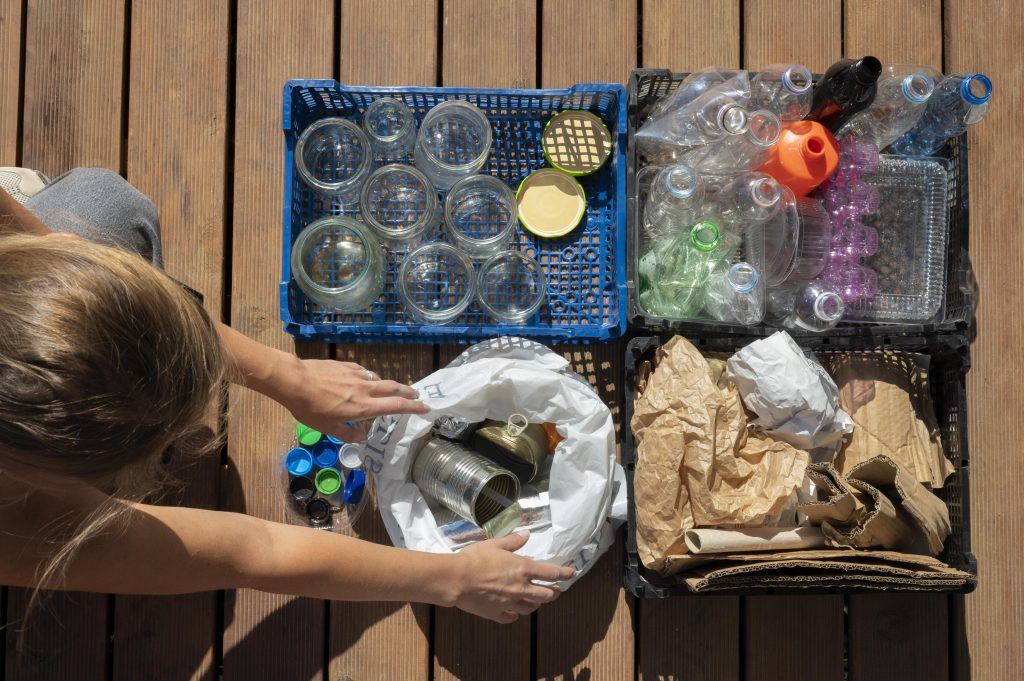Reducing household waste has become a pressing priority in 2025, as urban populations grow and waste disposal challenges intensify. According to the World Bank, global waste generation is expected to rise by 70% by 2050 if current patterns continue (World Bank, 2023). This makes it crucial for individuals and families to adopt sustainable habits at home. The good news is that reducing household waste effectively is no longer just about recycling—emerging trends and innovative practices now make it easier than ever to minimize our footprint.
This article explores practical, up-to-date strategies you can implement today, supported by recent innovations and industry insights. Whether you live in a city apartment or a suburban home, these steps can help you cut waste, save money, and contribute to a cleaner environment.

Why Reducing Household Waste Matters in 2025
Household waste directly impacts climate change, urban infrastructure, and even personal well-being. Landfills remain the third-largest source of human-related methane emissions, a greenhouse gas 80 times more potent than carbon dioxide over a 20-year period (U.S. EPA, 2024). At the same time, rising disposal costs are putting pressure on municipalities and households. Reducing waste not only eases the burden on local systems but also creates healthier, more sustainable living environments.
Consumers are also increasingly conscious of their personal role in climate action. Surveys from Pew Research Center (2024) show that 72% of global citizens are worried about the environmental impact of their consumption habits. As a result, sustainable living has shifted from being a niche lifestyle choice to a mainstream expectation.
Step 1: Conduct a Household Waste Audit
Before you can reduce waste effectively, you need to know what you are throwing away. A household waste audit involves tracking your trash and recyclables for a week. Note down categories like food scraps, packaging, paper, plastics, and electronics. Once you identify which areas generate the most waste, you can target them with specific solutions.
Tips for a Waste Audit:
- Use separate bins or bags for each category during the week.
- Record weights or approximate volume daily to see trends.
- Involve the whole family—this creates awareness and accountability.
This baseline will give you actionable insights to tackle waste reduction where it matters most.
Step 2: Embrace Smart Composting
Food waste remains one of the biggest contributors to household trash, making up nearly 30% of what ends up in landfills (FAO, 2024). In 2025, composting has gone high-tech. Smart composting systems now make it easier for even city dwellers to turn scraps into usable soil.
Current Trends in Composting:
- Smart bins with sensors: These track waste levels, reduce odor, and accelerate composting using controlled heat and microbial activity.
- Community compost hubs: Local governments and private startups are expanding neighborhood compost drop-offs to reduce landfill loads.
- Electric countertop composters: Devices like Lomi and Vitamix FoodCycler allow apartment residents to convert food waste into compost in just hours.
By composting, you can cut your food waste nearly in half while producing natural fertilizer for gardens, potted plants, or community green spaces.
Step 3: Adopt a Circular Mindset for Packaging
Plastic packaging is one of the most visible forms of waste. Although recycling programs exist, only 9% of plastics globally are successfully recycled (OECD, 2024). The emerging solution is shifting from single-use packaging to circular models.
Ways to Reduce Packaging Waste:
- Refill stations: Increasingly common in supermarkets, allowing customers to bring containers for dry goods, oils, and detergents.
- Returnable packaging: Startups like Loop partner with major brands to provide reusable packaging that consumers return after use.
- Bulk buying: Purchasing in bulk reduces the overall amount of packaging used per product.
By making these choices, households can actively support businesses that prioritize sustainability.
Step 4: Prioritize Reuse Over Recycling
Recycling is important, but reusing is even more effective. Extending the lifecycle of products reduces demand for new resources and prevents waste.
Practical Reuse Strategies:
- Repurpose glass jars for storage.
- Repair clothing instead of discarding it—sewing kits and repair cafés are trending in many cities.
- Invest in durable products rather than disposable ones (e.g., stainless steel straws, cloth napkins, refillable pens).
- Donate unwanted household items through local swap groups or online marketplaces.
The global resale and repair market is booming in 2025, with companies like Patagonia and IKEA offering repair programs to extend product life cycles.
Step 5: Leverage Digital Tools for Waste Reduction
Technology now plays a pivotal role in reducing household waste. Apps and smart devices help families track habits, access recycling guides, and find sustainable alternatives.
Notable Tools in 2025:
- Too Good To Go: Connects users with restaurants and grocers offering surplus food at discounted prices.
- ShareWaste: Links people with composters in their neighborhood to drop off scraps.
- Circular economy apps: Platforms like Olio make it easy to give away items—from food to furniture—so they stay out of landfills.
By using these tools, households can integrate sustainability into daily routines more seamlessly.
Step 6: Make Conscious Consumption Choices
Reducing waste isn’t just about what you throw away—it’s also about what you bring into your home. Choosing products with longer lifespans, sustainable packaging, or second-hand options can significantly cut down on future waste.
Conscious Consumption Habits:
- Buy products labeled recyclable, biodegradable, or refillable.
- Support local farmers and bulk food co-ops that minimize packaging.
- Shift toward plant-based diets, which generate less waste compared to meat-heavy consumption.
- Embrace minimalism: ask yourself whether you truly need an item before purchasing.
This approach not only reduces waste but also saves money and fosters a healthier lifestyle.
Step 7: Advocate for Policy and Community Initiatives
Individual action is powerful, but community-wide efforts amplify impact. Cities around the world are rolling out zero-waste goals, extended producer responsibility laws, and bans on single-use plastics.
How You Can Contribute:
- Support local ordinances that encourage waste reduction.
- Participate in community clean-ups and recycling programs.
- Encourage schools and workplaces to adopt zero-waste practices.
- Stay informed and vote for leaders who prioritize sustainability.
Grassroots advocacy combined with household changes creates momentum for larger systemic shifts.
Conclusion: Building a Zero-Waste Future
Reducing household waste effectively in 2025 requires more than just separating recyclables—it’s about adopting smarter systems, embracing technology, and making intentional choices every day. From composting food scraps with digital bins to rethinking packaging through refill stations and returnable containers, new trends are making waste reduction practical and accessible for all.
As families and individuals, our actions add up. By auditing our waste, composting efficiently, reusing creatively, leveraging apps, and supporting community efforts, we not only reduce our personal footprint but also contribute to global sustainability goals. With waste projected to keep rising, the time to act is now. A zero-waste lifestyle is not just an aspiration anymore—it’s a practical necessity, and each household has the power to lead the change.
References
- How to Compost at Home, https://www.consumerreports.org
- Global Waste Management Outlook 2024, https://www.unep.org
- The World has a Waste Problem. Here’s How to Fix It, https://www.ifc.org/en/blogs









